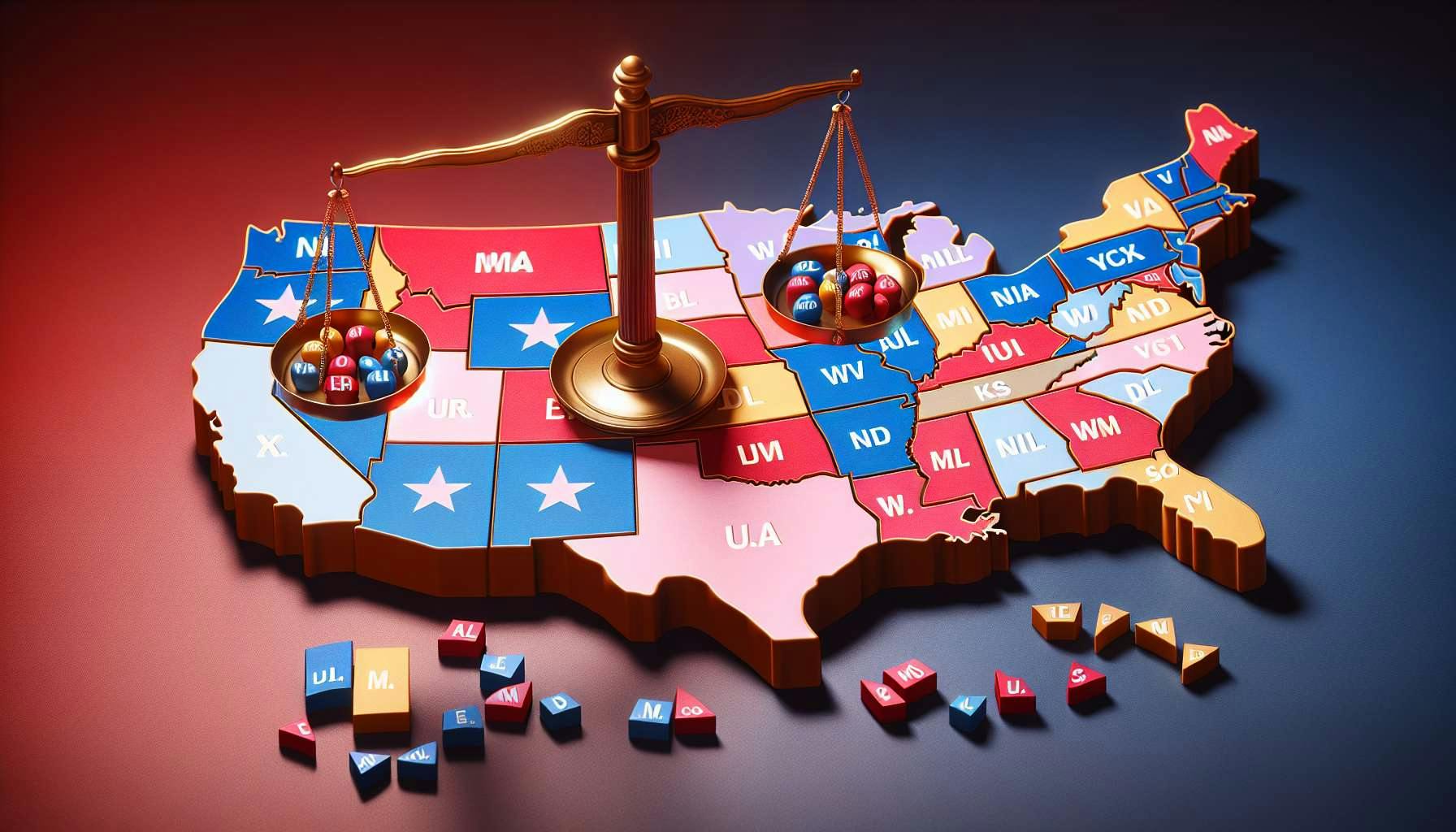
🏅 Top traders
| # | Name | Total profit |
|---|---|---|
| 1 | Ṁ997 | |
| 2 | Ṁ992 | |
| 3 | Ṁ655 | |
| 4 | Ṁ602 | |
| 5 | Ṁ599 |
People are also trading
Just to get some benchmarks here:
If Republicans win all toss-up states, they win by 86:
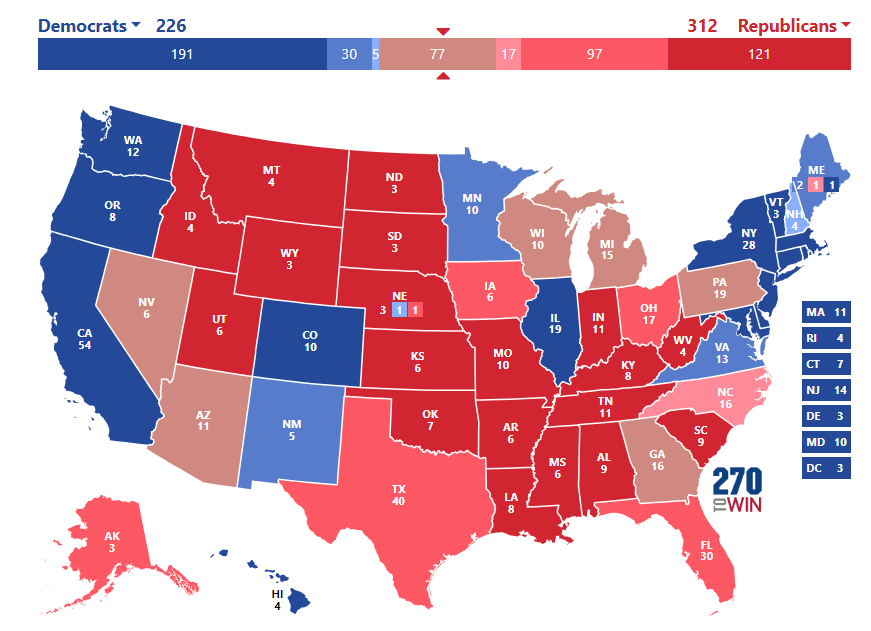
If Democrats win all toss-up states, they win by 68:
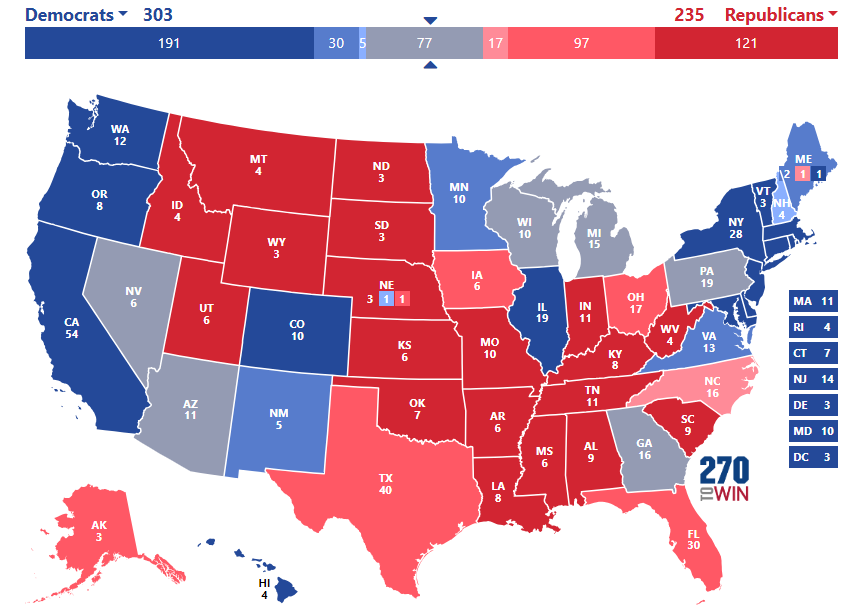
but throw in North Carolina and they win by 100:
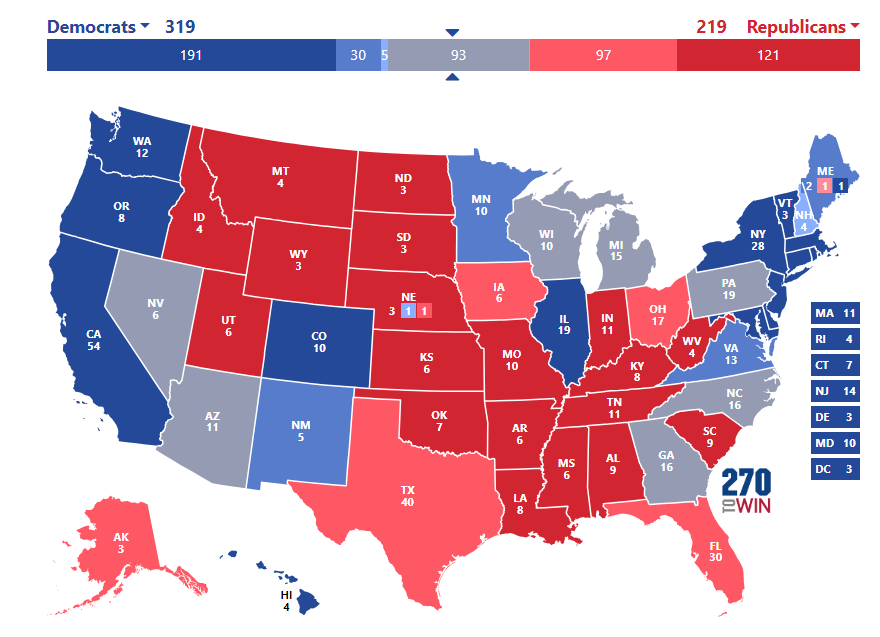
If R's win all the toss-ups and manage to stretch it into a win in New Hampshire, Minnesota, and NE-2 as well, which is the only Democratic territory that really has much of a chance of being vulnerable, then they win by 116:
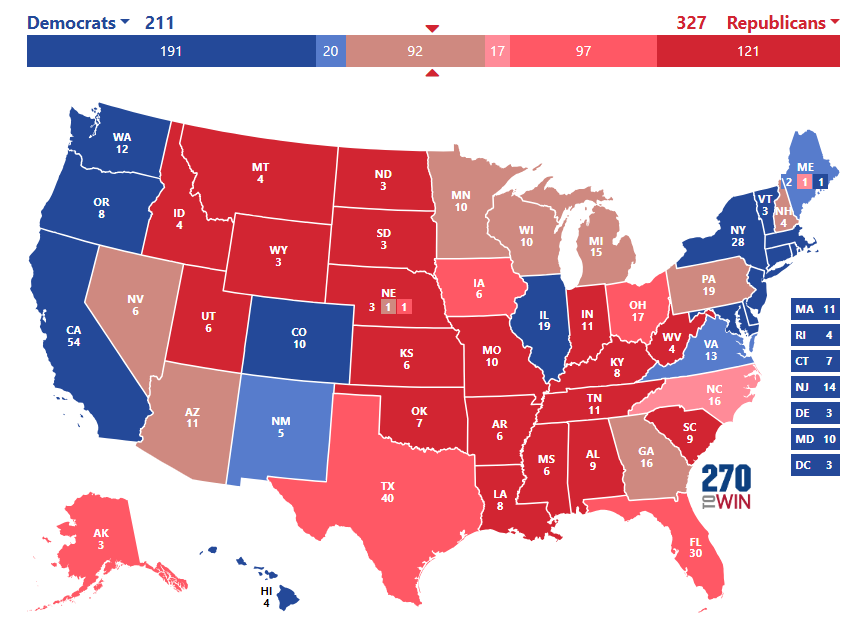
If Democrats win tossups + NC + Florida, Texas, and ME-2 (probably the next most likely red-leaning states to go blue), they win by a huge margin of 240. This is probably a big part of why Republicans have an Electoral College advantage: They get the benefit of a massive number of electoral votes from these two states even though both of them are pretty close. It also means that Republicans basically automatically lose if they can't hold on to both Florida and Texas.
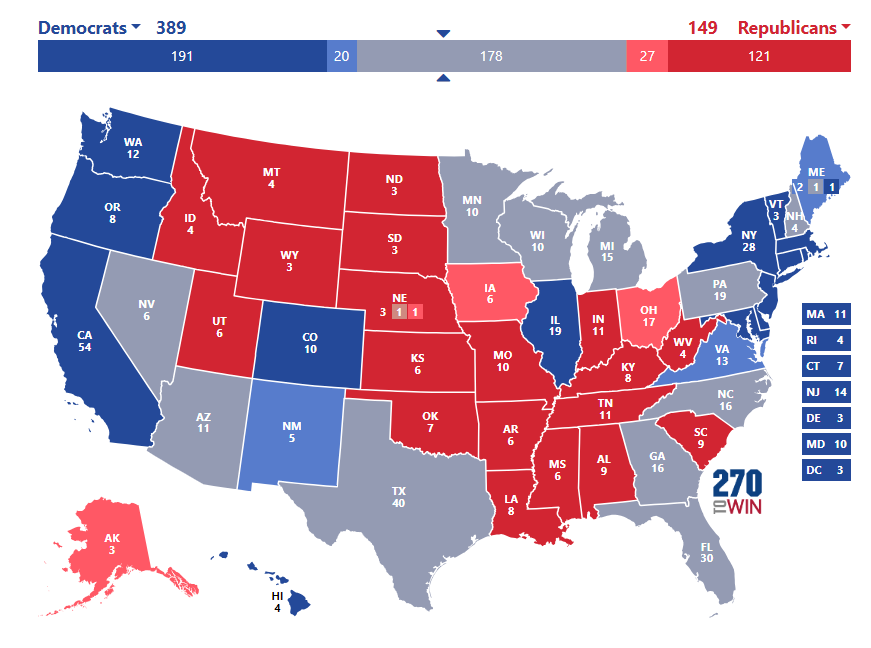
If Republicans win every single state or district that is even remotely competitive according to 270ToWin, they have a margin of 156 votes:

And if Democrats do the same, they win by 296:
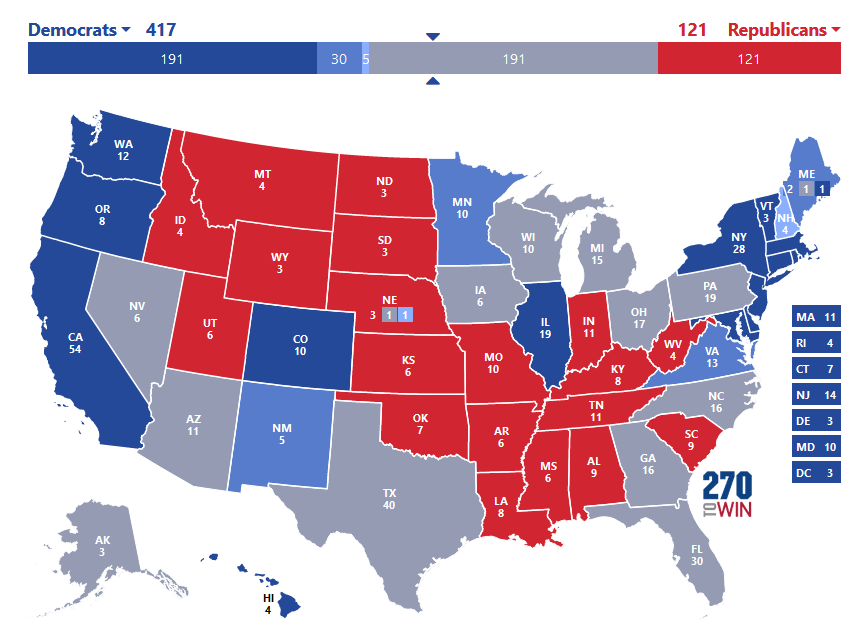
@PlasmaBallin In other words, anything higher than R+156 or D+296 should be considered impossible for all intents and purposes. And in reality, the result isn't going to be even close to those numbers, since they're based on extremely unlikely scenarios.
@PlasmaBallin Also, I was surprised that 270ToWin says NE-1 is competitive, since I haven't heard about it anywhere else. Maybe it got less red in redistricting. Or maybe it's just more elastic since it's a single district.